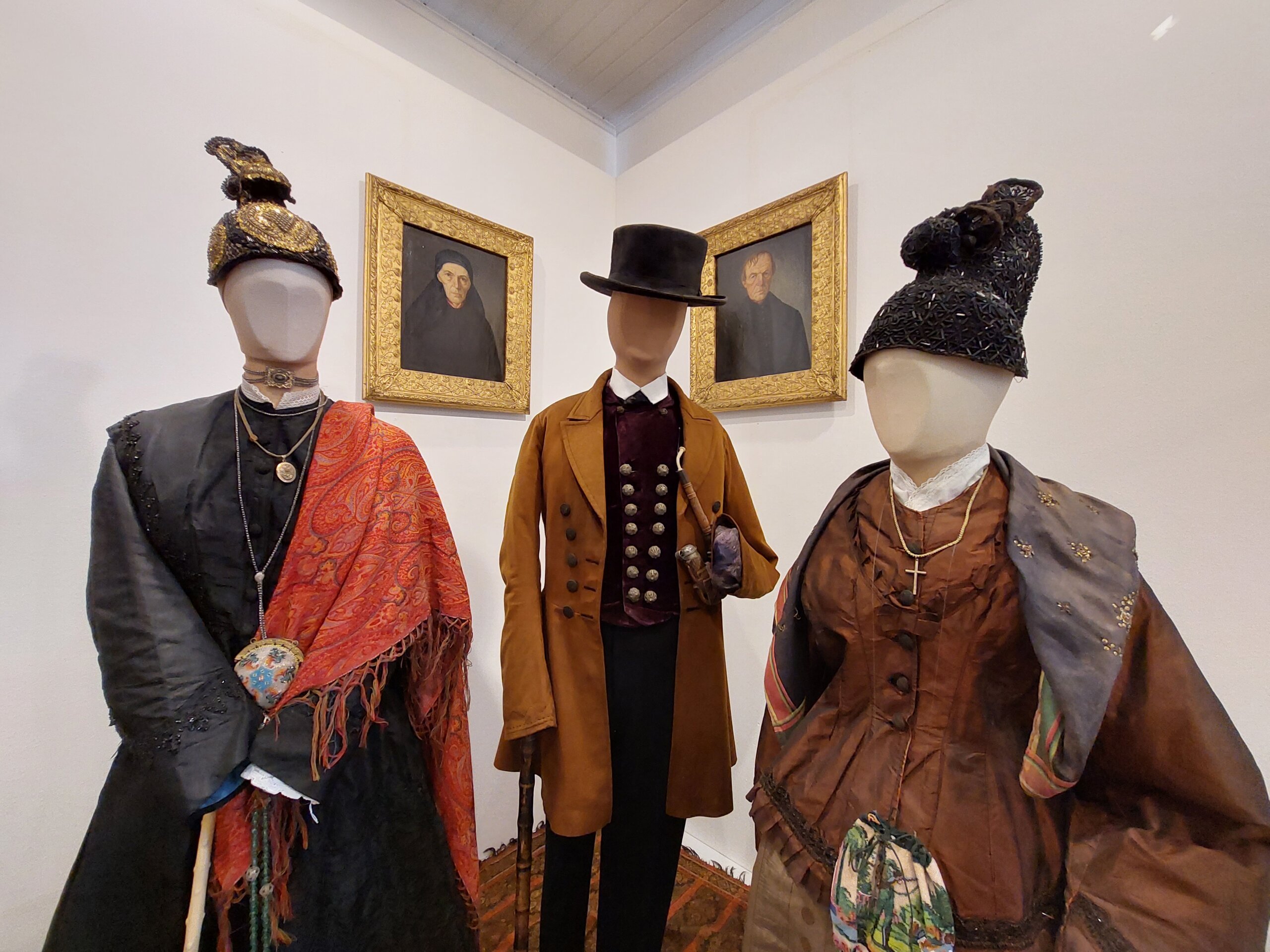To Read
Until the mid-17th century, men and women in the Innviertel traditionally mostly wore black. Only the ruff, worn around the neck, was white. Black material was difficult to produce and therefore expensive. In the Catholic Habsburg countries, black was considered a dignified colour and not the colour of mourning. In the late 17th century, men eventually began to wear a long brown robe. This was the clothing commonly worn in Innviertel for 150 years.
In the mid-19th century, Austrian folk costumes changed. Women gradually exchanged hoods for black headscarves. A woman wearing a headscarf can be seen on the left of the picture in the centre of the display case.
Outfits for feast days were often made of pleated, shimmering black silk fabrics. Clothing was long and close-fitting.
The figure on the left is wearing a black silk outfit for a feast day. It consists of a short jacket and the accompanying long skirt. The jacket is buttoned at the front. The white lace collar is part of the shirt. The jacket is also elaborately decorated with a narrow woven braid, known as a soutache, and pearls. The hem of the jacket is also trimmed with a fringe.
To go with her costume, she is wearing a black and gold bonnet, a choker and other jewellery. A traditional woollen shawl is draped over her shoulder.
The rosary was also essential for religious holidays. The parasol was used not only on rainy days; it also served to protect its carrier from the sun.
The man in the centre is dressed just as splendidly. Under his brown robe, or coat, he is wearing a waistcoat made of claret-coloured velvet. The waistcoat is fastened at the front with a large number of buttons. You can take a closer look at some other buttons in one of the display cases in the centre of the room.
A walking stick and a pipe were also an integral part of the outfit, as was a matching hat. In the 1860s, no-one left the house without headwear!
The lady on the right, like the one on the left, is wearing an outfit for a feast day. The iridescent brown silk taffeta was an expensive fabric and is highlighted by the rich embellishments on the dress. In contrast to the black dress, this lady is also wearing an apron edged in black lace. She also has a bag made of tiny bright glass beads, a gold chain with a cross, a shawl and a black bonnet embroidered with glass seed beads.
In later years, men replaced their long brown robes with a short spencer jacket with a modern turndown collar. One such spencer is lying on the armchair.

